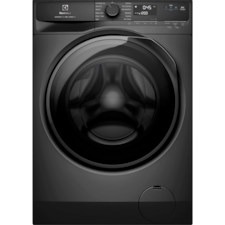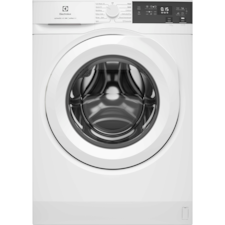A single tub washing machine is designed to do all the washing and spin drying in one tub. Available in both front-load and top-load models, single tub washing machines streamline laundry chores and free you from manual intervention. By contrast, twin tub washing machine has two separate tubs located next to each other – one used for washing and the other for spin drying. While twin-tub machines can be more affordable and use less water per wash, they require extra effort and attention throughout the process.
Fear not, in this article, Electrolux Indonesia is going to explain some of the basic concepts in the world of washers – single tub washing machines and twin tub washing machines.
6 Differences between single tub and twin tub washing machines
1. Single tub washing machines cost more than twin tub models
The first notable difference between a single tub washing machine and a twin tub washing machine is their prices. A twin tub washing machine is more of an economical choice since it is usually offered for almost a quarter of the price of a single tub washing machine.
For instance, you only have to spend around Rp1.500.000 on a 7.5 kg twin tub washing machine, whereas a top-loading single tub washing machine costs you roughly Rp3.300.000.
However, one of the reasons for this pricing difference is that twin tub washers are mostly made of plastic and have fewer features compared to single tub washers.
>>> Read more: Buying guide – How to choose the best washing machine for your home?
2. Single tub machines use more energy with added functions
In terms of electricity consumption, both single tub and twin tub washers have comparable energy consumption per wash. However, single tub washing machines use slightly more energy if the pre-soak and tub cleaning functions are enabled.
Also, if your model of single tub washing machine has a built-in heater to wash your laundry on warm water (which is mostly found in front-loading washers), it will likely increase the energy consumption.
Even so, don’t be de-motivated by the assumption that using a washing machine will do harm to your electricity bills. Some single tub washers allow washing programmes to run on lower power, saving your energy up to 70%.
So it really comes down to a washer’s functionalities that defines electricity consumption. The more functions a washing machine has, the more energy it relies on. More helpful information can be found in our post about How many watts does a washing machine consume?
Some single tub washers come featured with Energy saver washing programmes which can save your energy up to 70%
3. Water usage varies by drum design and manual control
Water consumption depends on the specification of each washing machine. In general, water usage according to types of washing machines are detailed as follows:
|
Type of washing machine |
Water consumption (litre) |
|
Front-loading washing machine |
60L |
|
Top-loading washing machine |
140L |
|
Twin tub washing machine |
120L |
Both top loading washing machines and twin tub washing machines have a vertical tube design, allowing water to be filled on a high level before a spin cycle begins.
However, with twin tub washers, since you need to manually retrieve water for each wash load either by attaching a hose to your twin tub washer or by using buckets to fetch water from the faucet, you have to choose how much water to use in each load. Therefore, this type of washers can become handy in water-restricted houses or drought-affected areas.
On the contrary, a front-loading washer has a horizontal drum design. Because of this, the water level is required to rest below the half-way point of the tub, making this type of washer water efficient.
>>> Read more: Washing your King Size bedcover at home – Why not?
4. Single tub washing machines incur higher maintenance costs
You might be wondering which one is more durable? A single tub washer or a twin tub washer? Well, if there is a damage to both types of washing machines, a single tub washer will cost you more as it contains more spare and additional parts compared to a twin tub washer.
Therefore, since most of the single tub washing machines are made of metal, you are encouraged to wipe the water off the body of the machine to prevent it from rusting, making the machine more durable. Also, it is recommended to do a quick tub clean after each washing and drying cycle to remove any residue, preventing the building up of mould that might affect your next wash.
However, it is easier to maintain a twin tub washer as this type of washing machine is mostly made of plastic and it doesn’t have an inner and outer tube design.
5. Compact single tub design versus bulky twin tub machines
A single tub washing machine works as a single unit with one tub handling all the washing, rinsing and drying processes, which makes the entire package compact and thus easier to place in a small and limited laundry space. This might be one of the reasons that make Electrolux washing machines such as the Electrolux UtraEco EWF8005EQWA popular choices among Indonesian consumers.
On the other hand, since a twin tub washing machine contains both a washing tub and a dryer tub, this type of washing machine is bulky, which will take up a lot of space in the laundry room.
6. Fully automatic dry cycle in single tub washing machines
Single tub washing machines work automatically without you having to be there for the drying process. And your laundry will be dry up to 90%.



